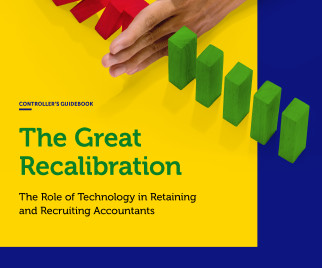Start Now Earning 2024 Top 100 ProAdvisor Certifications
Insightful Accountant
JUNE 11, 2023
With more ProAdvisors beginning the Top 100 process every year, Murph is working earlier than ever to help you qualify. Certification time has arrived.

Insightful Accountant
JUNE 11, 2023
With more ProAdvisors beginning the Top 100 process every year, Murph is working earlier than ever to help you qualify. Certification time has arrived.

Accounting Tools
JUNE 11, 2023
Related Courses Accountants' Guidebook Bookkeeping Guidebook Cost Accounting Fundamentals What is the Cost of Sales? The cost of sales is the accumulated total of all costs used to create a product or service, which has been sold. The cost of sales is a key part of the performance metrics of a company, since it measures the ability of an entity to design, source, and manufacture goods at a reasonable cost.
This site is protected by reCAPTCHA and the Google Privacy Policy and Terms of Service apply.

Insightful Accountant
JUNE 11, 2023
FloQast CEO Mike Whitmire explains how you can solve today’s talent crisis through technology.

Accounting Tools
JUNE 11, 2023
Related Courses Business Ratios Guidebook The Interpretation of Financial Statements What is Return on Total Assets? The return on total assets compares the earnings of a business to the total assets invested in it. The measure indicates whether management can effectively utilize assets to generate a reasonable return for a business, not including the effects of taxation or financing issues.

Speaker: Victor C. Barnes, CPA, MBA
In the climb from contributor to leader, the rules quietly change. But if you’re aiming for the summit, the air gets thinner, and what got you here won’t be enough to get you to the top. 🗻 What made you successful early in your finance career—technical accuracy, sharp analysis, flawless execution—won’t be what carries you to the next level. The higher you go, the more your effectiveness depends on how you connect, adapt, and communicate.

Accounting Tools
JUNE 11, 2023
Related Courses Bookkeeper Education Bundle Bookkeeping Guidebook New Controller Guidebook What is the Purpose of Accounting? The purpose of accounting is to accumulate and report on financial information about the performance, financial position , and cash flows of a business. This information is then used to reach decisions about how to manage the business, or invest in it, or lend money to it.

Accounting Tools
JUNE 11, 2023
Related Courses Accountants' Guidebook Bookkeeper Education Bundle Bookkeeping Guidebook What are Accrued Expenses? An accrued expense is an expense that has been incurred, but for which there is not yet any expenditure documentation. In place of the documentation, a journal entry is created to record an accrued expense, as well as an offsetting liability.
Financial Ops World brings together the best financial operations content from the widest variety of thought leaders.

Accounting Tools
JUNE 11, 2023
Related Courses Inventory Management Operations Management Purchasing Guidebook What is the Reorder Point? The reorder point tells you when to reorder inventory , so that you won’t run out of stock. It usually triggers the purchase of a predetermined amount of replenishment inventory. If the purchasing process and supplier fulfillment work as planned, the reorder point should result in the replenishment inventory arriving just as the last of the on-hand inventory is used up.

Accounting Tools
JUNE 11, 2023
Related Courses GAAP Guidebook Governmental Accounting International Accounting What is an Accounting Standard? An accounting standard is a document issued by a rule-setting body, stating the manner in which accounting transactions are to be recorded and reported. The entities that most commonly issue accounting standards are the Financial Accounting Standards Board (FASB) and the International Accounting Standards Board (IASB).

Accounting Tools
JUNE 11, 2023
Related Courses The Balance Sheet The Interpretation of Financial Statements Treasury stock is a company's own stock that it has reacquired from shareholders. When a company buys back shares , the expenditure to repurchase the stock is recorded in a contra equity account. This is a balance sheet account that has a natural debit balance. Since this treasury stock account is classified within the equity section of the balance sheet (where all other accounts have a natural credit balance), this mea

Accounting Tools
JUNE 11, 2023
Related Courses Operations Management What is Activity Capacity? Activity capacity is the rate of output of an activity over a protracted period of time, assuming the existence of normal operating conditions. Normal conditions involve a reasonable amount of down-time for employee breaks, maintenance, shift changes, and so forth. Activity capacity is incorporated into the budgeting process for the production area, to determine the amount of goods that the process can actually generate.

Speaker: Kim Beynon, CPA, CGMA, PMP
The most overlooked, yet most critical, element of transformation is preparing people for change. Automation and AI aren't just technical upgrades, they’re cultural shifts which can challenge identities. That’s why change management isn’t a side project—it’s the foundation. In finance, where precision and process rule, navigating change can feel especially disruptive.

Accounting Tools
JUNE 11, 2023
Related Courses Accounting for Inventory Activity-Based Costing Cost Accounting Fundamentals What is Absorb in Accounting? In accounting, to absorb is to spread a cost from one account to other accounts. The absorption process involves allocating a cost based on a consistently applied methodology. Ideally, absorption is based on how the cost in the originating account is used.

Accounting Tools
JUNE 11, 2023
Related Courses Accountants’ Guidebook Bookkeeping Guidebook What are Accounting Concepts? Accounting concepts are a set of general conventions that can be used as guidelines when dealing with accounting situations. These concepts have also been integrated into the various accounting standards , so that a user will not implement a standard and then find that it is in conflict with one of the accounting concepts.

Accounting Tools
JUNE 11, 2023
Related Courses Financial Analysis What is Annuity in Arrears? An annuity in arrears is a series of payments that are due at the end of each successive time period. For example, the periodic payments on a mortgage are usually paid in arrears. This type of payment schedule reduces the present value of the payments, since the payments are made later in time.

Accounting Tools
JUNE 11, 2023
Related Courses Corporate Finance Working Capital Management What is Accounts Receivable Discounted? Accounts receivable discounted are unpaid billings to customers that have been sold to a third party in exchange for cash. These billings are sold off at a reduction from their face value so that the seller can gain immediate access to cash, thereby improving its cash flow.

Speaker: Mark Gilham, FCCA, CPP
Finance used to be the function that counted, now it's the one that’s counted on. 📊 For accounting firms, controllers, and finance leaders, expectations are rising faster than headcount. Businesses want agile forecasts, granular analysis, seamless reporting, and smart automation—often without added resources while demanding uncompromised accuracy and compliance.

Accounting Tools
JUNE 11, 2023
What is Key Management Personnel? Key management personnel are those people having authority and responsibility for planning, directing, and controlling the activities of an entity, either directly or indirectly.

Accounting Tools
JUNE 11, 2023
Related Courses Cost Accounting Fundamentals Cost Management Guidebook What is Kaizen Costing? Kaizen costing is the process of continual cost reduction that occurs after a product design has been completed and is now in production. Cost reduction techniques can include working with suppliers to reduce the costs in their processes, or implementing less costly re-designs of the product, or reducing waste costs.

Accounting Tools
JUNE 11, 2023
Related Courses Accounting for Inventory Cost Accounting Fundamentals What is Overapplied Overhead? Overapplied overhead occurs when the total amount of factory overhead costs assigned to produced units is more than was actually incurred in the period. This usually happens when a business uses a standard long-term overhead rate that is based on the average amount of factory overhead that is likely to be incurred, and the average number of units produced.
Let's personalize your content